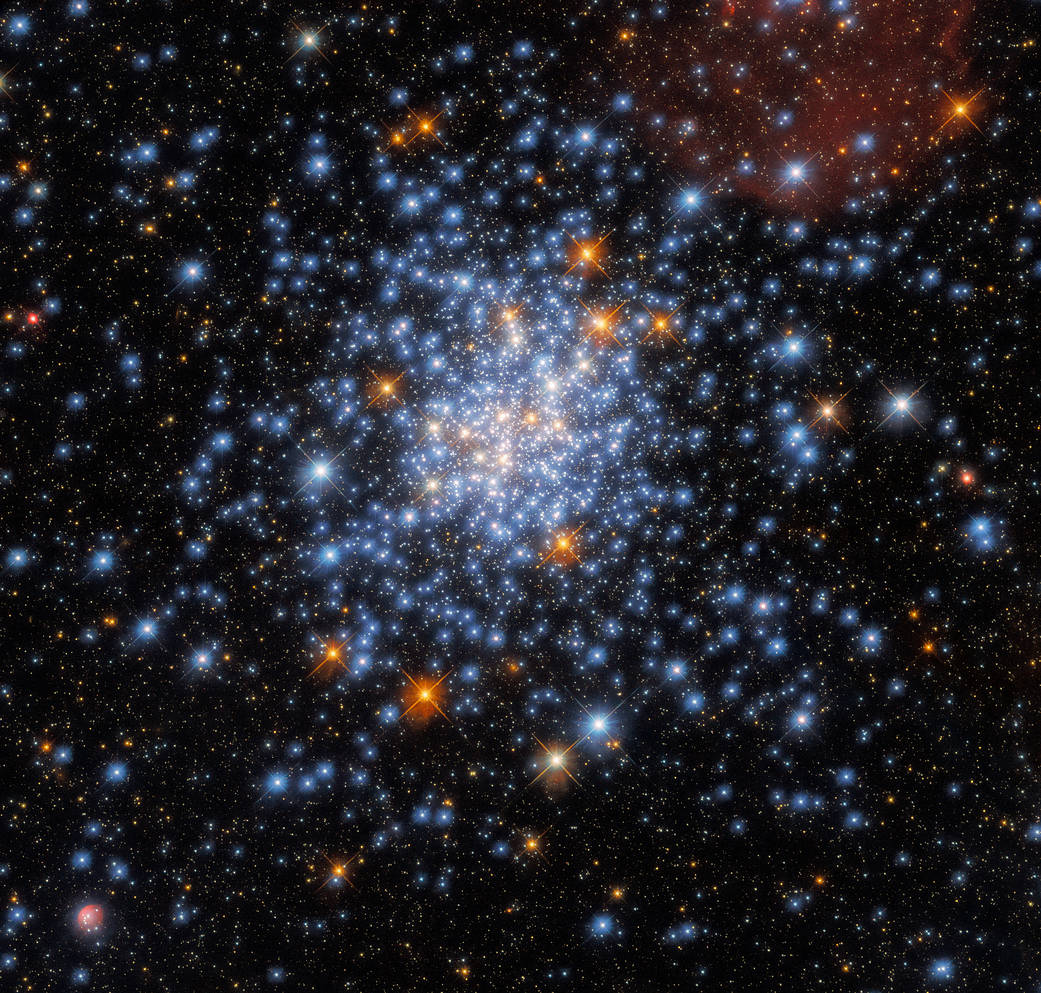This image taken with the NASA/ESA Hubble Space Telescope depicts the open star cluster NGC 330, which lies around 180,000 light-years away inside the Small Magellanic Cloud. The cluster – which is in the constellation Tucana (the Toucan) – contains a multitude of stars, many of which are scattered across this striking image.
Because star clusters form from a single primordial cloud of gas and dust, all the stars they contain are roughly the same age. This makes them useful natural laboratories for astronomers to learn how stars form and evolve. This image uses observations from Hubble’s Wide Field Camera 3 and incorporates data from two very different astronomical investigations. The first aimed to understand why stars in star clusters appear to evolve differently from stars elsewhere, a peculiarity first observed with Hubble. The second aimed to determine how large stars can be before they become doomed to end their lives in cataclysmic supernova explosions.
Hubble images show us something new about the universe. This image, however, also contains clues about the inner workings of Hubble itself. The crisscross patterns surrounding the stars in this image, known as diffraction spikes, were created when starlight interacted with the four thin vanes supporting Hubble’s secondary mirror.
Text credit: European Space Agency (ESA)
Image credit: ESA/Hubble & NASA, J. Kalirai, A. Milone
这张由NASA/ESA哈勃太空望远镜拍摄的图片描绘了一个开放星团NGC 330,它位于小麦哲伦星云内,距离我们大约18万光年。这个位于杜鹃座的星团包含了大量的恒星,其中很多散落在这张惊人的图片上。
由于星团是由单一的原始气体和尘埃云形成的,它们所包含的所有恒星的年龄都大致相同。这使得它们成为天文学家学习恒星如何形成和演变的有用的天然实验室。这张图片使用了哈勃广角相机3的观测数据,并结合了来自两个非常不同的天文调查的数据。第一项调查旨在了解为什么星团中的恒星似乎与其他地方的恒星有不同的演化,这是用哈勃首次观察到的奇特现象。第二项调查的目的是确定恒星能有多大,才会注定在灾难性的超新星爆炸中结束其生命。
哈勃望远镜的图像向我们展示了宇宙的一些新东西。然而,这张照片也包含了关于哈勃望远镜内部运作的线索。这张图片中围绕着恒星的纵横交错的图案,被称为衍射尖峰,是星光与支撑哈勃次镜的四个薄叶片相互作用时产生的。
文字来源:欧洲航天局 (ESA)
图片来源:ESA/Hubble & NASA、J. Kalirai、A. Milone







